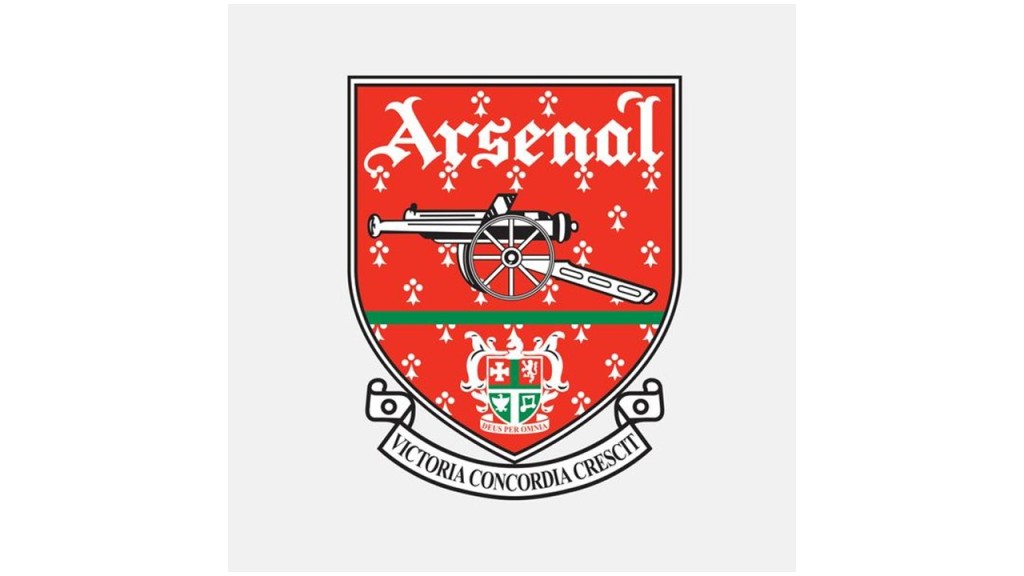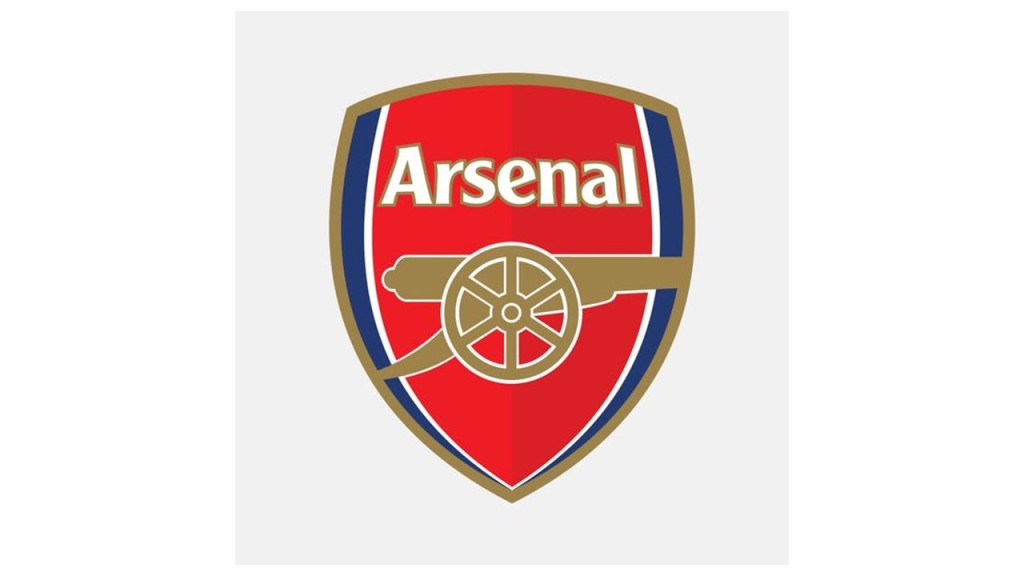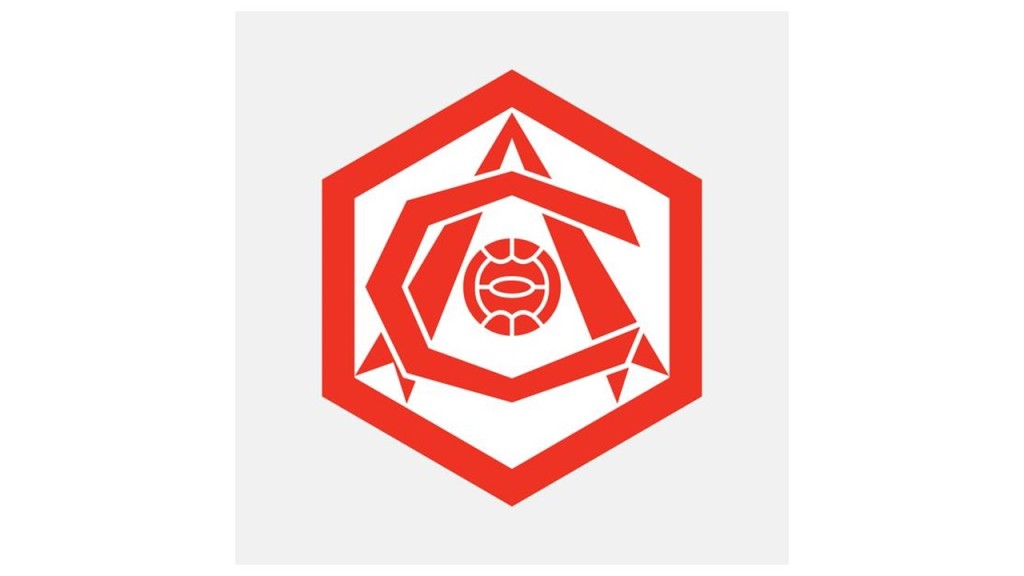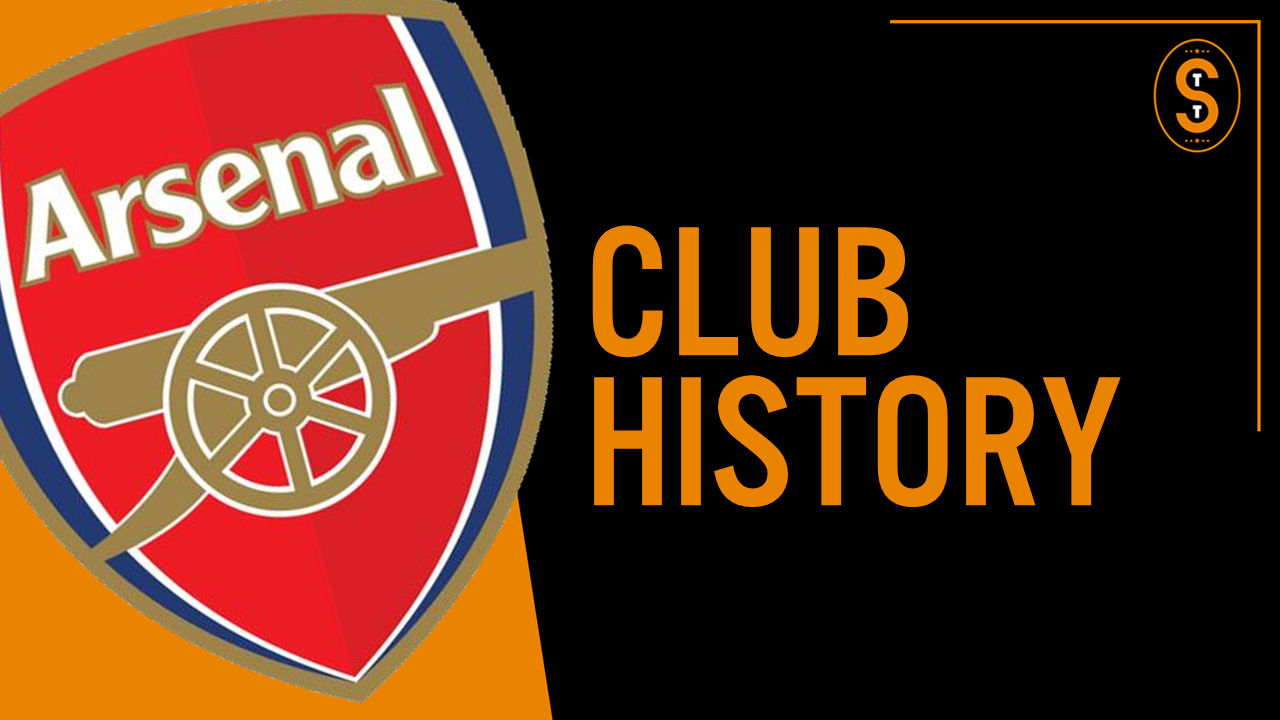Welcome to the Soccer Tavern, where we’re discussing the history, culture, and philosophy of the beautiful game. My name is Dave and in this series of videos, we’re discussing the history of soccer clubs around the world. Next up is Arsenal Football Club. Pull up a seat and let’s start the discussion.
Arsenal FC is located in the Northern part of the city of London. London is located in the southern-central part of England in the United Kingdom. Arsenal currently play in the Premier League. The club’s home ground is called the Emirates Stadium, which opened in 2006, and holds 60,432 people.
Origin
Arsenal FC was founded in late 1886, when a group of workers from the Woolwich Arsenal Armament Factory in South London decided to form a soccer team.
They called themselves Dial Square as a reference to the sundial atop the entrance to their factory. The club name was soon changed to Royal Arsenal, though when the club turned professional in 1891 the name changed again to Woolwich Arsenal.
The club didn’t have an established home ground & bounced around the Plumstead area of South London for 27 years. In 1913, the club was relegated to the 2nd division and was suffering financial issues. At that time, Sir Henry Norris came to the club’s rescue. Sir Henry acquired Arsenal and decided there was greater potential for the team in North London. He moved them to the Highbury section of London where Arsenal still plays to this day although they moved stadiums in 2006. The Woolwich was dropped from their name in 1915 and the club became Arsenal Football Club.
Nicknames
The club’s nickname is ‘The Gunners’. The first mentions of the Gunners in reference to Arsenal were actually from opponent newspapers in the late 19th/early 20th century. The nickname was possibly used to describe the Arsenal fans who carried explosives that they would set off during matches. Being that they worked at a military production facility this makes some sense.
The club was actually more commonly nicknamed the Reds in its early days for playing in red, but over the years, the fans & club names became synonymous and the club was referring to themselves as The Gunners by 1910 at the latest.
Crest
Now let’s talk about the club’s crest.
Arsenal crests have more or less always included some type of cannon or cannons dating all the way back to the very first Arsenal crest in 1888. The cannons come from the military influence in the Borough of Woolwich, which we’ve already discussed is where Arsenal began.

In 1949, Arsenal revealed their most well-known crest, the Victoria Concordia Crescit (VCC) crest. ‘Victoria Concordia Crescit’ is Latin for ‘Victory grows out of harmony’ and was written by Harry Homer, the program editor, in 1948. The Club liked the motto and officially adopted it by 1949 along with launching a new crest. The new crest featured ‘Arsenal’ in a gothic style typeface, had a westward facing cannon, the Borough of Islington’s coat of arms (where the club’s home stadium was located) and ermine (which are those weird looking snowflake things all over the crest). The club more or less used this same crest from 1949 until 2002 with some slight variations over the years.

In 2002, the club was constructing a new stadium (the Emirates) and transitioning into the modern world of soccer, which includes a heavy business/commercial focus. The club wasn’t able to trademark the VCC crest that they had been using for the past 50+ years and not being able to trademark a crest or logo is near financial suicide. So, the club changed to this really simplified logo of Arsenal with the cannon that we see still being today.

One last point of note is the Art Deco Crest you will sometimes see. This includes the intertwined letters A & C with a soccer ball in the middle. The A referencing Arsenal, the soccer ball representing football (which is what England & most of the rest of the world calls soccer), and C representing club. So, Arsenal Football Club. It was created by Herbert Chapman, who we’ll talk about in a bit, and a man named Claude Waterlow Ferrier in 1925 to rebrand the club and usher in a new era for Arsenal.
Important Events
Arsenal have had many important events in their club’s history but I’d like to discuss two of them now. Tottenham fans may want to mute this segment.
(1) In the 1914/15 season, which was the final season before the First World War, Arsenal finished in fifth place in the Second Division. The professional leagues stopped for the War. Play resumed in 1919 with the First Division being extended by 2 clubs to 22 teams. Most people expected the 2 clubs that would have been relegated to the Second Division (Chelsea & Tottenham) to remain in the First Division along with the top two teams from the Second Division being promoted (Derby & Preston).
At the Football League’s Annual General Meeting on March 10, 1919, league chairman, John McKenna, made a speech to the election committee recommending Arsenal’s promotion ahead of Tottenham Hotspur, even though Arsenal finished 5th in the Second Division in the 1914/15 season. His speech concluded that Arsenal deserved a higher standing having joined the Football League in 1893, 15 years before Spurs. The Gunners won the election by 10 votes and it’s still not known to this day whether Arsenal’s owner at the time influenced McKenna’s speech or not. Whatever the truth, more than 90 years later, Arsenal are the only club to have remained in the top flight of English soccer every season since the Football League resumed after WWI – and also the only club during this time not to have been promoted based on playing merit.
(2) The next most important event that I’d like to discuss happened in the 2003-2004 Premier League season. That season, Arsenal won 26 matches and drew 12 in the Premier League to finish the season undefeated. They were the first English team to finish undefeated since the 1888-1889 season and were thus nicknamed ‘the Invincibles.’ The club clinched the title with a draw on April 25, 2004 at White Hart Lane, home of you guessed it, rivals Tottenham Hotspur. For their achievement, they were awarded a special Gold Premier League trophy and their unbeaten run actually stretched a record 49 matches from May 7, 2003 to October 24, 2004. The Invincibles were a legendary team of the modern era.
Supporters
Now let’s discuss Arsenal supporters. Arsenal supporters are called Gooners, which is not actually a play on the club’s nickname – at least not completely. Back in the 1970s when hooliganism was prevalent in England, the Arsenal hooligan firm was called by some opposing firms as the Goon squad in a derogatory manner.
The Arsenal firm decided to adopt it as their own as a source of pride. Naturally as the Goon squad was closely associated with the team nicknamed the Gunners, this evolved into the firm being called Gooners. As hooliganism died out, all fans have adopted the nickname of ‘Gooners’.
Noteworthy Players
Arsenal have had many incredible players throughout their history that there’s too many to really give details about. Here are some of their names and I’m going to skew a bit more modern in naming:
- Thierry Henry – club legend and record goal-scorer for the club
- Dennis Bergkamp – inventive striker who had impeccable control and scored amazing wonder goals.
- Tony Adams – nicknamed Mr. Arsenal because he spent his entire 22-year playing career with the club.
- Patrick Viera – combative center midfielder who was an astounding physical presence that combined incredible technical skills on the ball.
- Ian Wright – lethal goalscorer who helped the club win many trophies.
And like I said, there’s many others, we just don’t have time to discuss them here.
Noteworthy Managers
The club’s 2 most important managers in its history are Herbert Chapman and Arsene Wenger.
Herbert Chapman was the very first modern manager in the world of soccer. He was a revolutionary and was the first person to control all aspects of running a soccer club from player signings, training, match day tactics, and running the club as a business. He was also one of the first tactical pioneers in the world of soccer, inventing the W-M formation. He was hired in the summer of 1925 and set Arsenal on a path of dominance in the 1930s after winning their first FA cup in 1930. Unfortunately, he caught pneumonia in January of 1934 while watching an Arsenal 3rd team match and passed away soon after. Chapman’s leadership enabled Arsenal to continue their domination after his death until WWII stopped the league.
Arsene Wenger is the other most important manager in the club’s history. He is a divisive figure for Arsenal fans these days but his resume is incredibly impressive. He was appointed manager on October 1, 1996 from the awesomely named Japanese club Nagoya Grampus Eight where he was a fairly unknown entity to English fans. He was a tactical pioneer although not quite the level of Chapman, he did usher in a new age of possession based, beautiful passing, and flowing attacking soccer to the Premier League. He guided Arsenal to their first Premier League title in the 1997/98 season (his first full season in charge) and won the title in the 2001/02 season before making history in 2003/04, as he managed the Invincibles. He has won 7 FA Cups – the most of any manager – and was voted Manager of the Year 3 times. He’s Arsenal’s longest ever serving manager and doesn’t always get recognized for his efforts in managing the club’s transition to a new stadium and into the modern age of soccer as big business.
Rivals
Now it’s time to talk about rivalries. Arsenal has 3 main rivals.
(1) Arsenal’s rivalry with Chelsea dates back many years, with each squad going through cyclical success but the modern rivalry has really heated up. This is due to 3 things. (1) Both clubs are in London. (2) Chelsea’s other historic rivals of Fulham & QPR have faded from prominence. (3) Roman Abramovich’s acquisition of Chelsea in 2003 and subsequent influx of billions into the club turned them into a rival title contender almost overnight.
(2) Manchester United and Arsenal each have a glorious history in English soccer, but it was always one or the other winning titles while the other faded to mid-table non-competitiveness or worse. That was until Arsene Wenger joined Arsenal in 1996 and built the club into title challengers. Manchester United were the dominant squad in those early Premier League years and continue to be a perennial title challenger. Famously, Roy Keane, Manchester United’s combative center midfielder and Patrick Viera, Arsenal’s own combative center midfielder, had some epic battles over the years that made this the fiercest rivalry in the Premier League in the late 1990s and early 2000s.
(3) Finally, Arsenal’s third and most intense rival is Tottenham Hotspur. The rivalry began when Arsenal moved to Highbury in 1910, which was only about 5 miles from where Tottenham played at White Hart Lane. The rivalry escalated with the famous vote in 1919 that we already discussed where Arsenal was added to the First Division at the expense of Tottenham. Years of animosity between the clubs and important matches played only a few miles apart have helped this North London Derby grow into one of the most intense in the Premier League today. It’s also helped that Spurs have been building a more formidable squad the last 5 years or so.
Stats & Records
Time to talk some stats & records as of February 2018, which is when we are recording this video.
Arsenal have spent 101 seasons in the top flight in their history, including more than 90 consecutive seasons.
The club has 30 major trophies including:
- An English record 13 FA Cups
- 13 1st division/Prem trophies
- 2 League Cups (currently in the final of this year’s cup)
- And 1 UEFA Cup Winners’ Cup
The club’s record first team appearance holder is David O’Leary with 772 appearances.
The club’s record goal scorer is Thierry Henry with 228 goals.
The club’s record transfer purchase was Pierre-Emerick Aubameyang from German club Borussia Dortmund on January 31, 2018 for about £56M.
The club’s record transfer sale was Alex Oxlaide-Chamberlain to Liverpool FC on August 31, 2017 for about £35M could become close to £40M if certain clauses are met.
And one last fun fact about Arsenal FC: the club has only been relegated 1 time in its history, which was after the 1912-1913 season when they dropped from the 1st to 2nd division.
So there you have it… a bit of history on Arsenal FC. Let’s continue the discussion in the comments section below this video.
Thanks for stopping by the Soccer Tavern. Hope to see you again sometime soon. Cheers.
